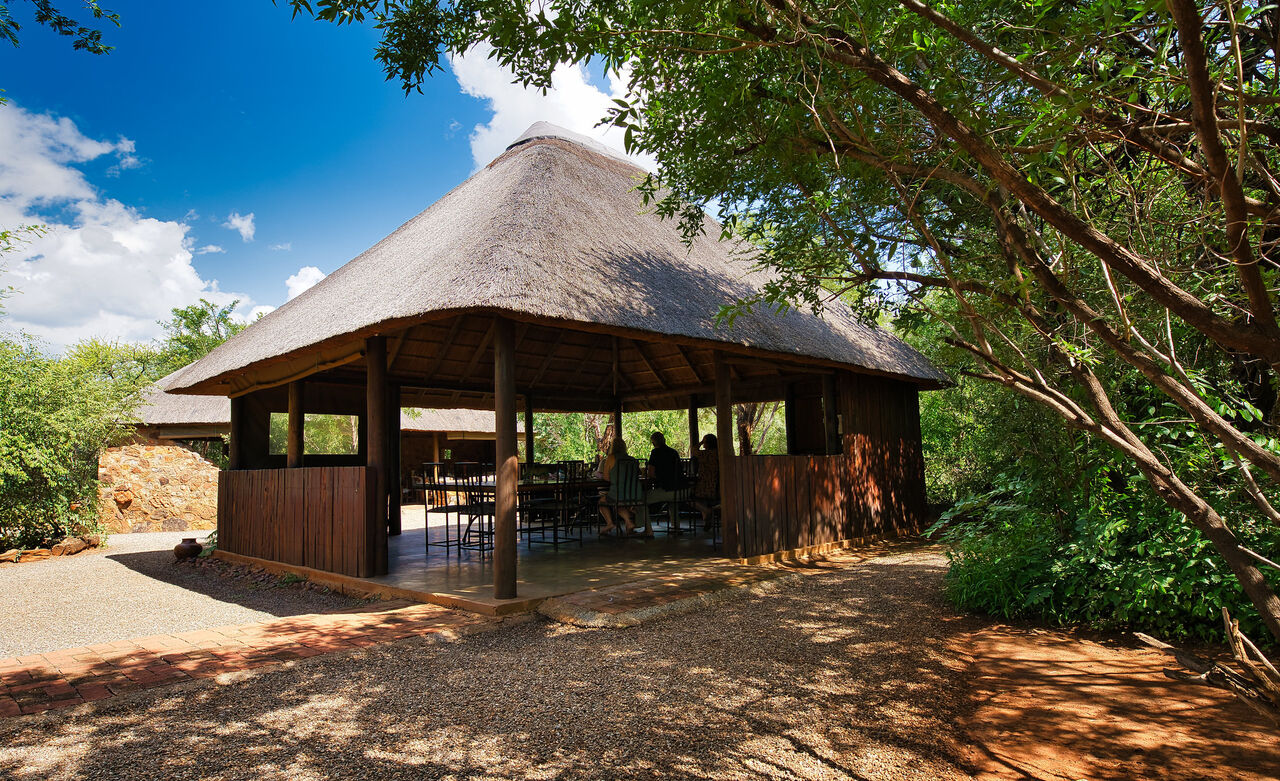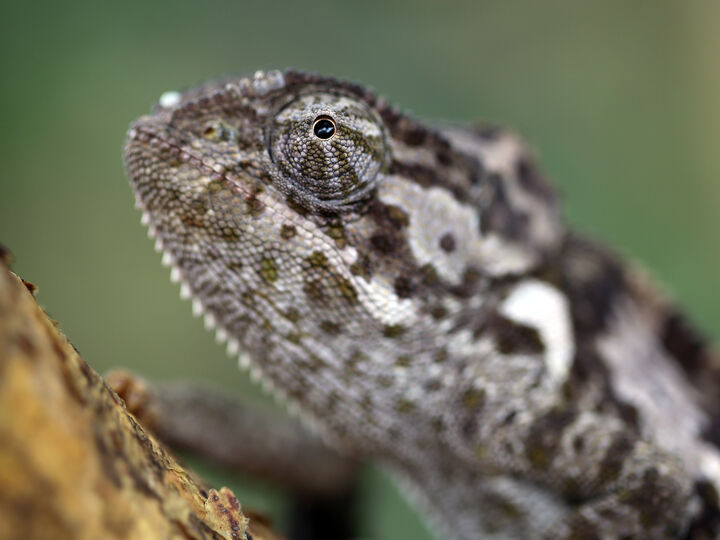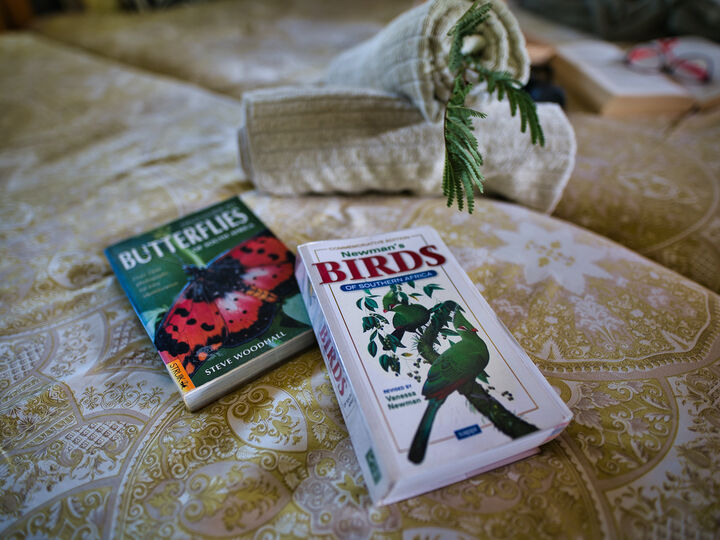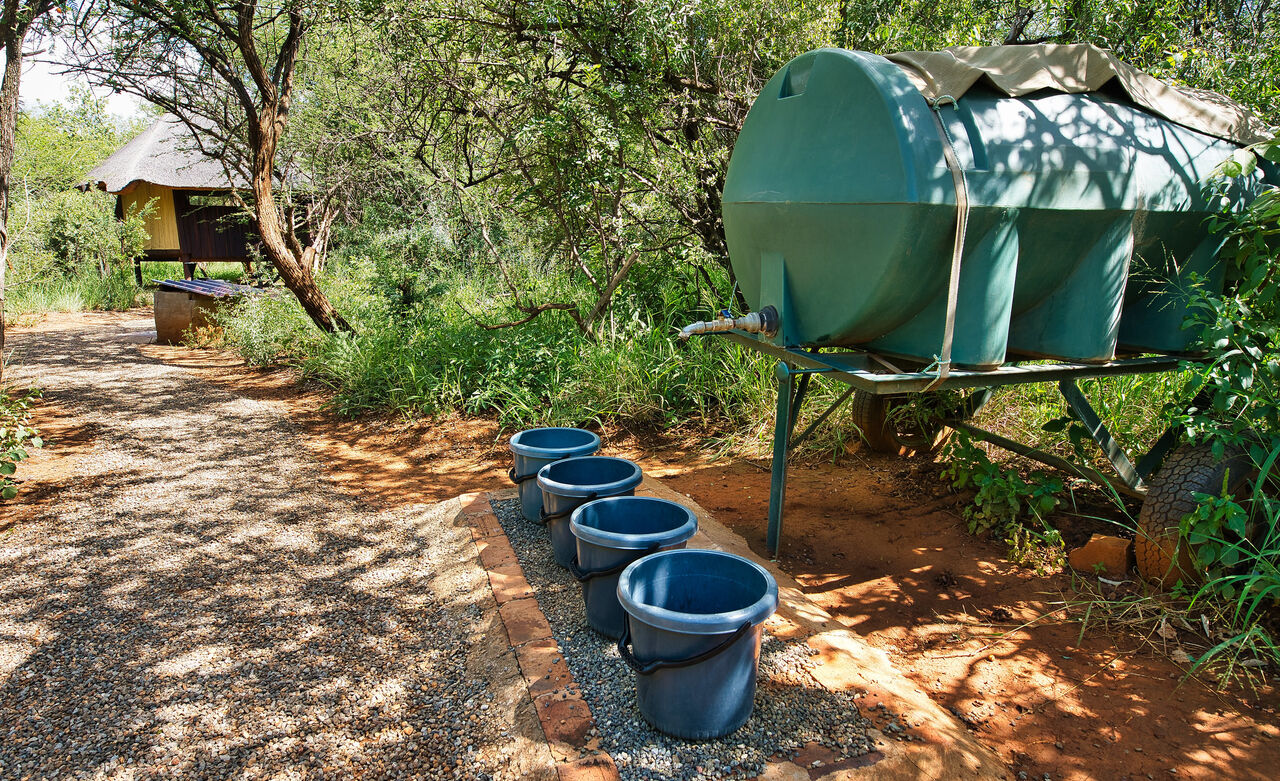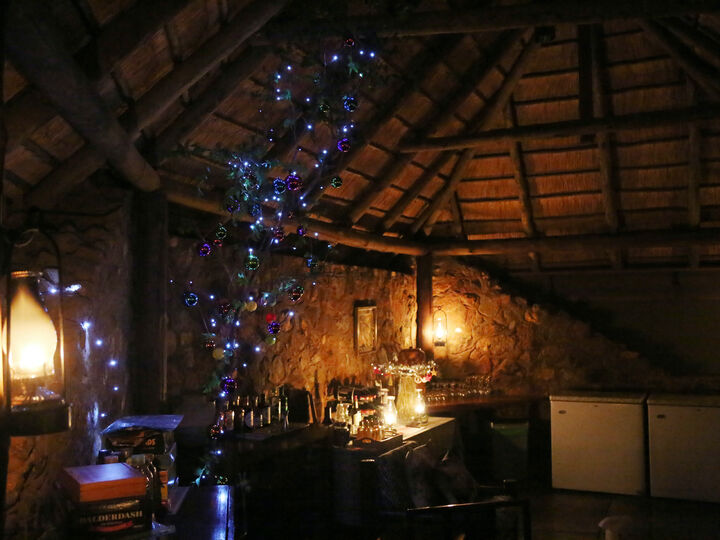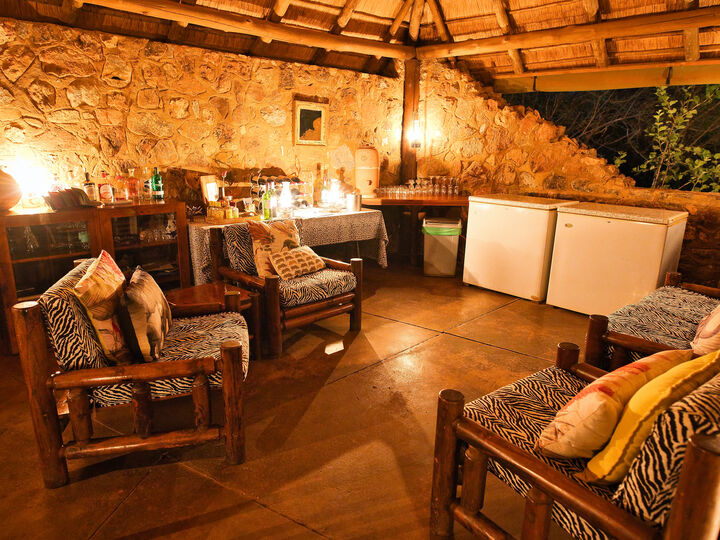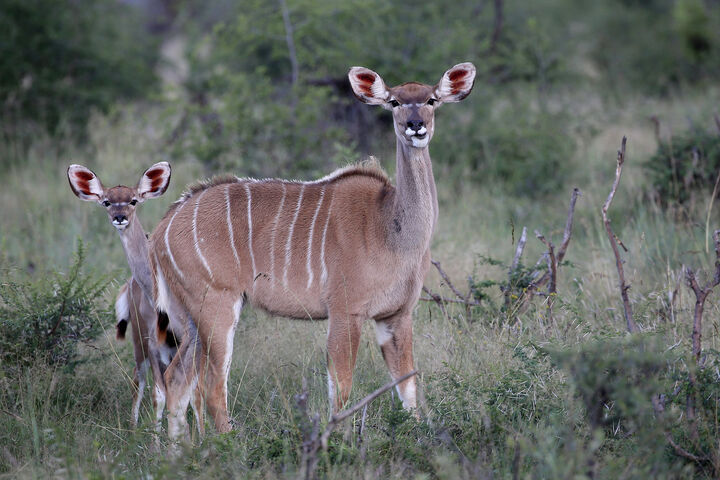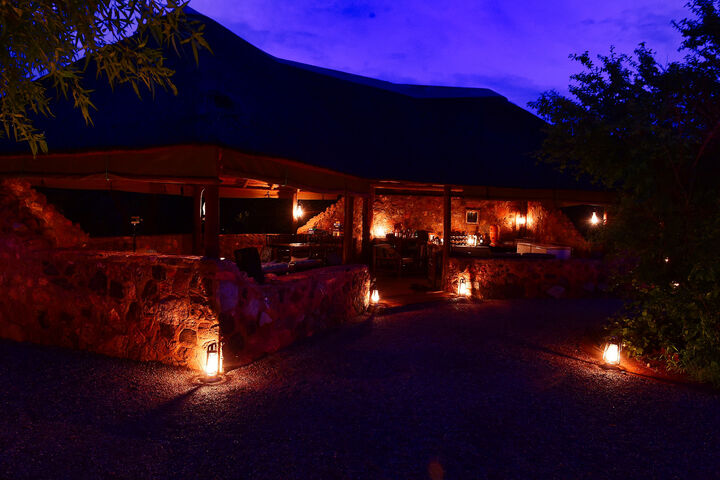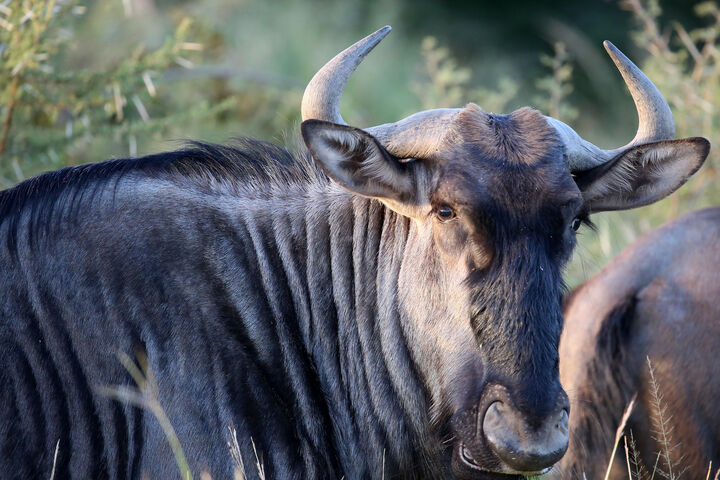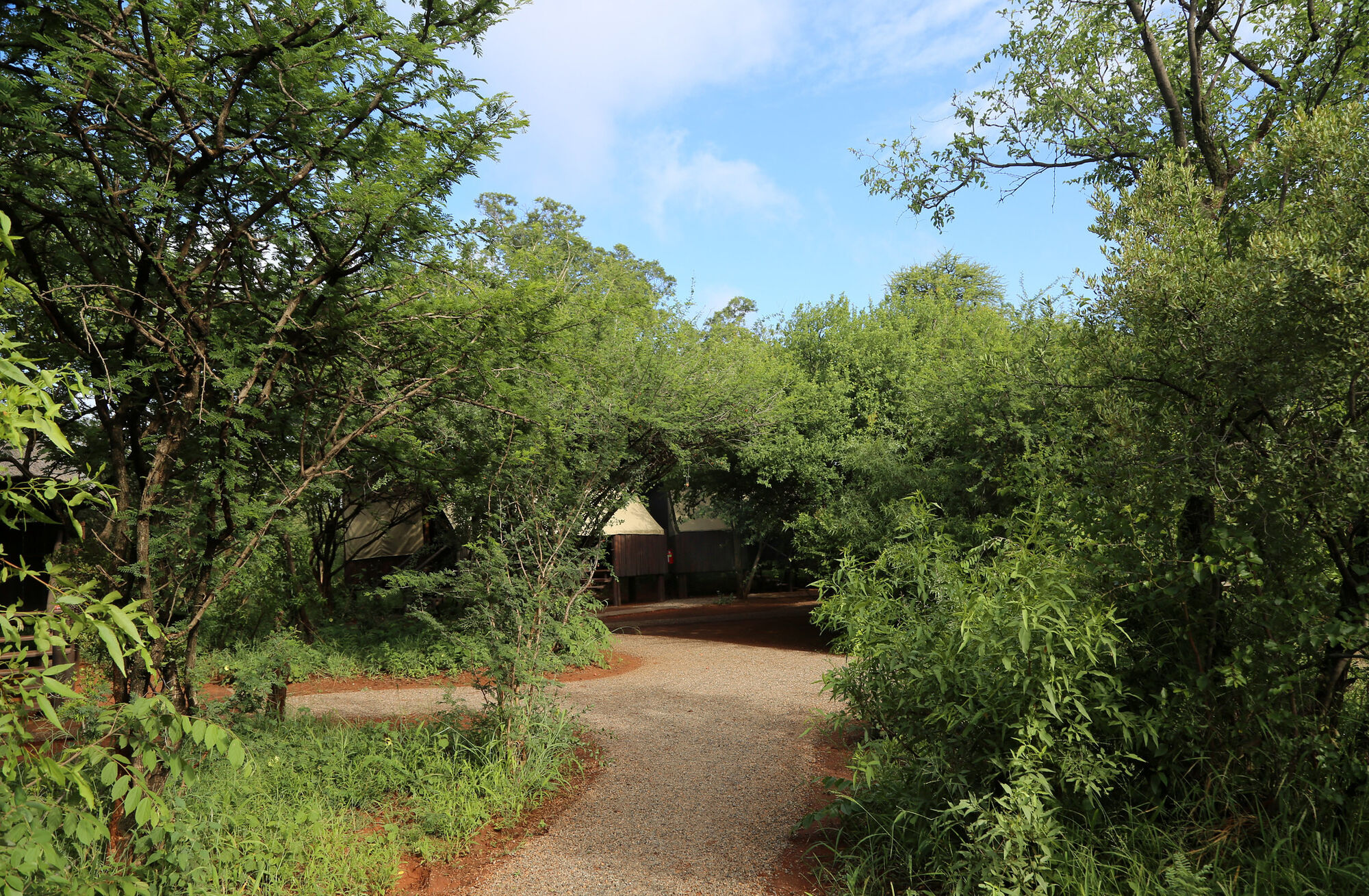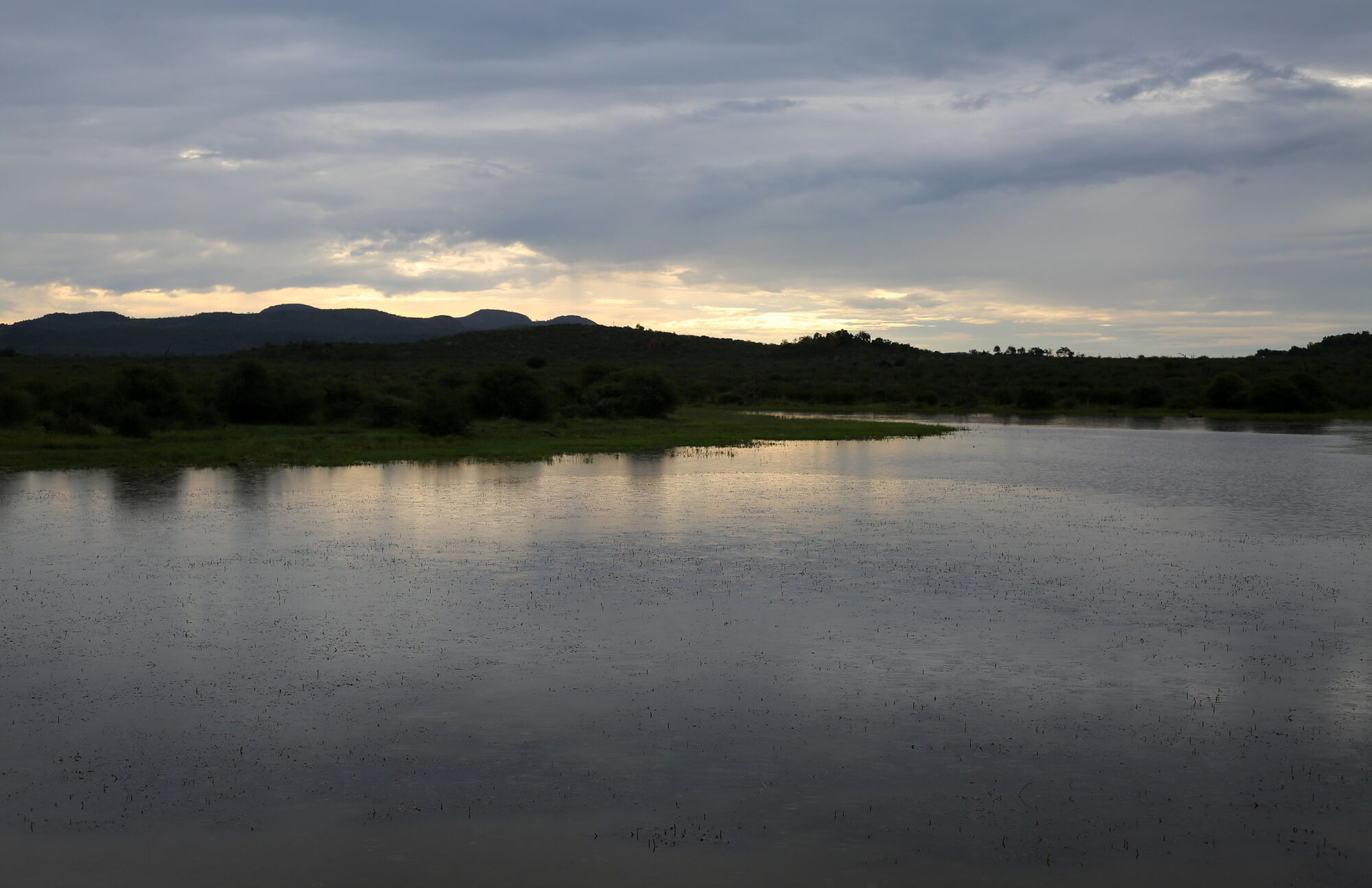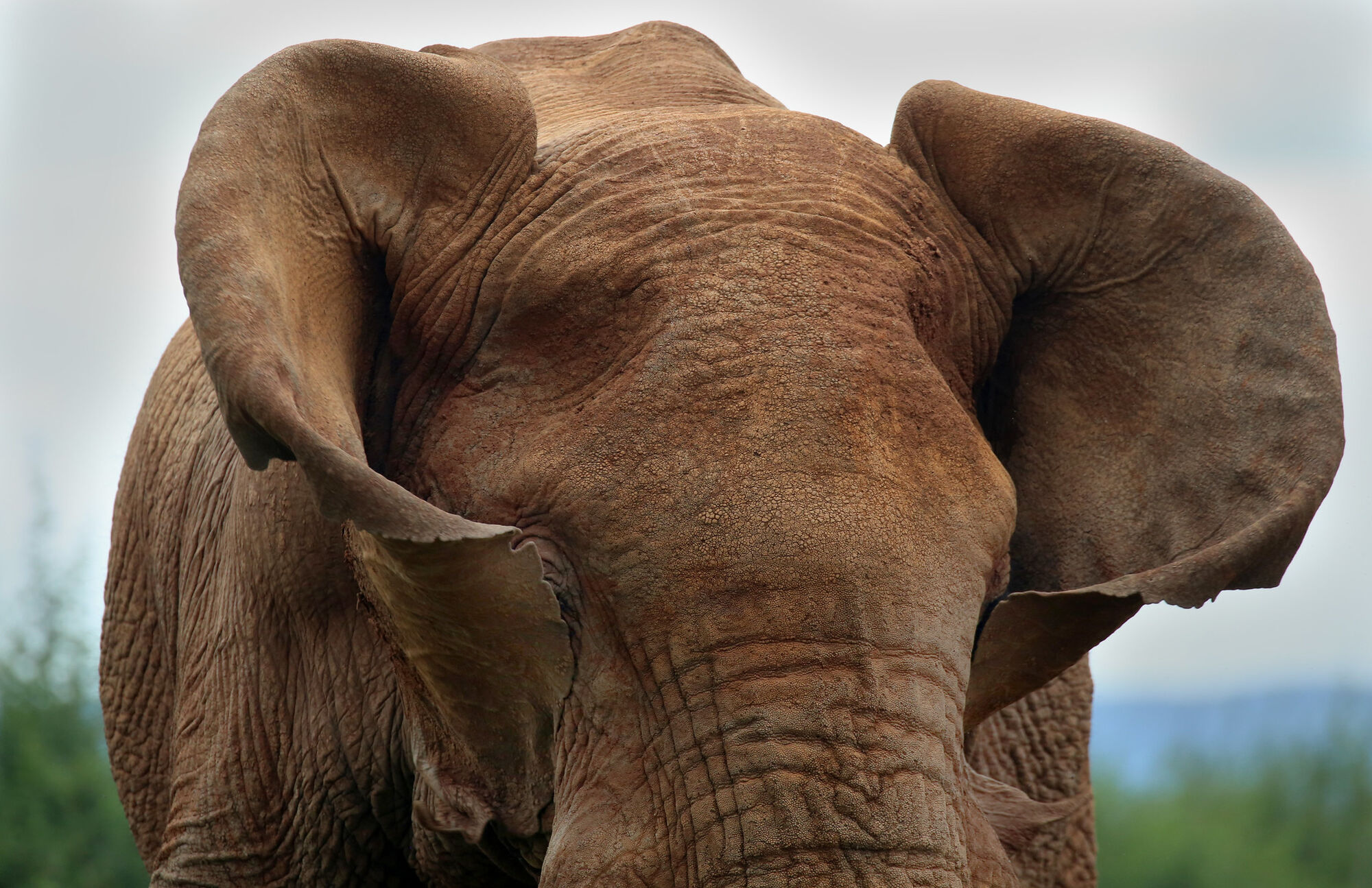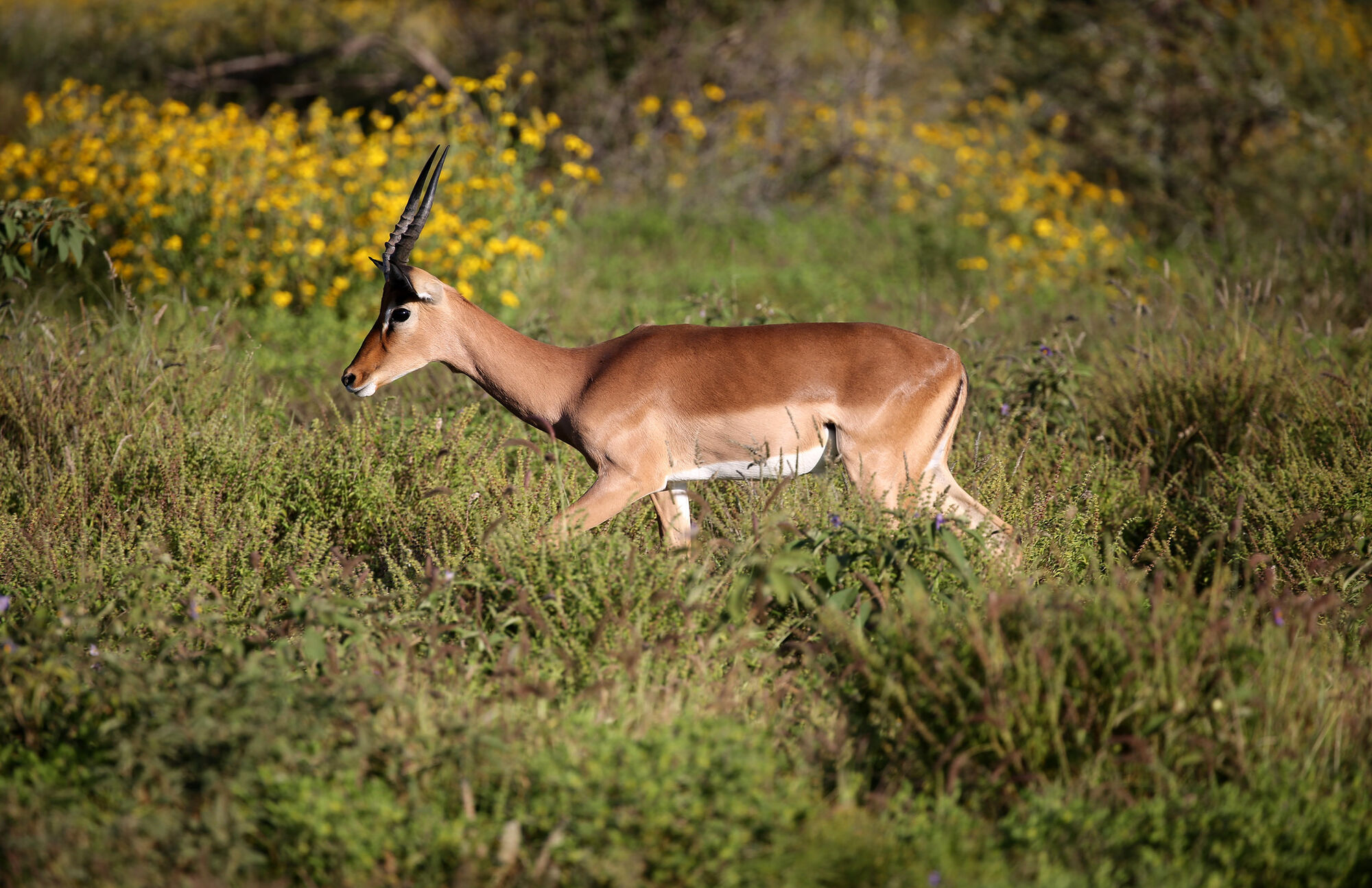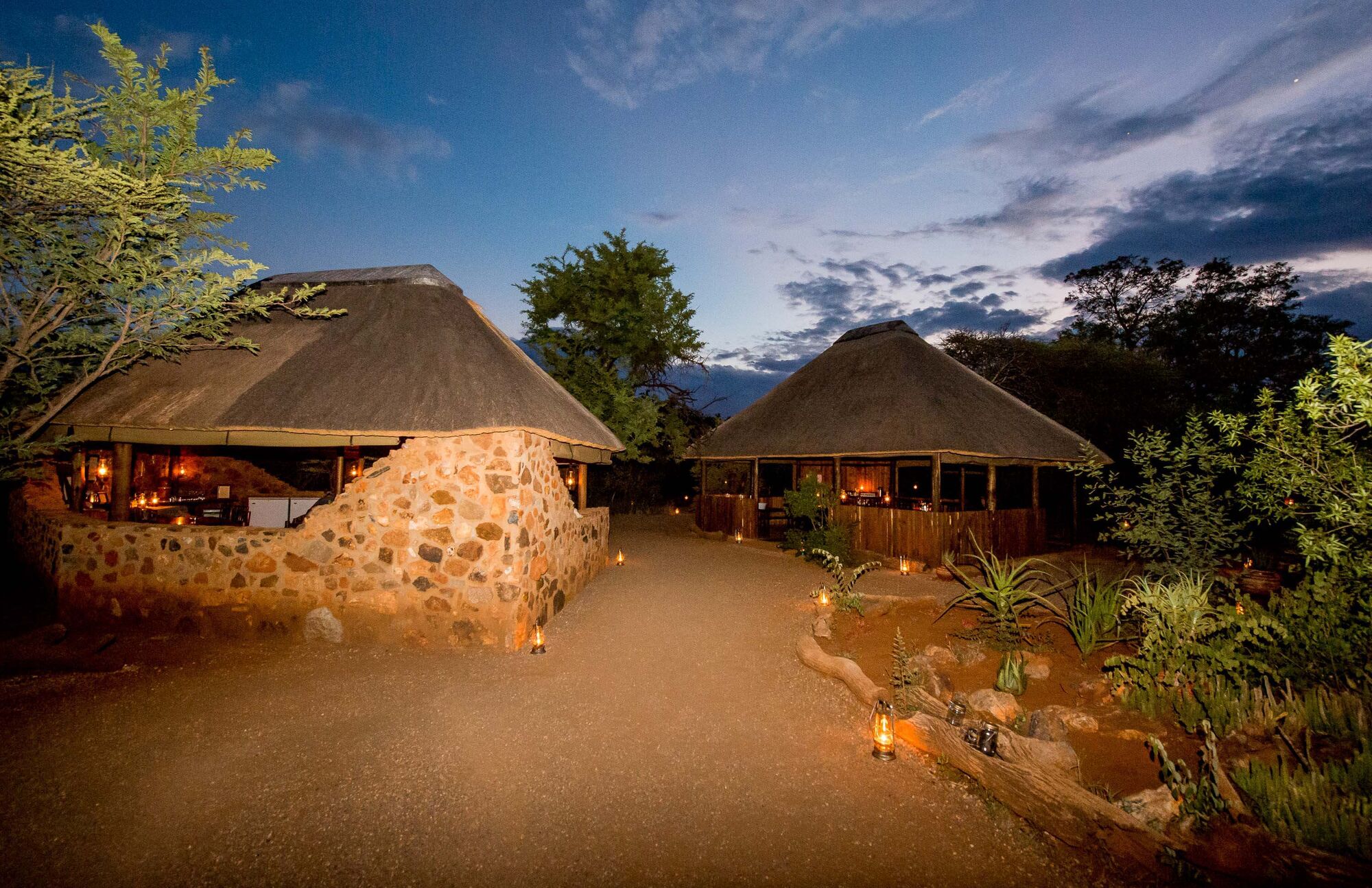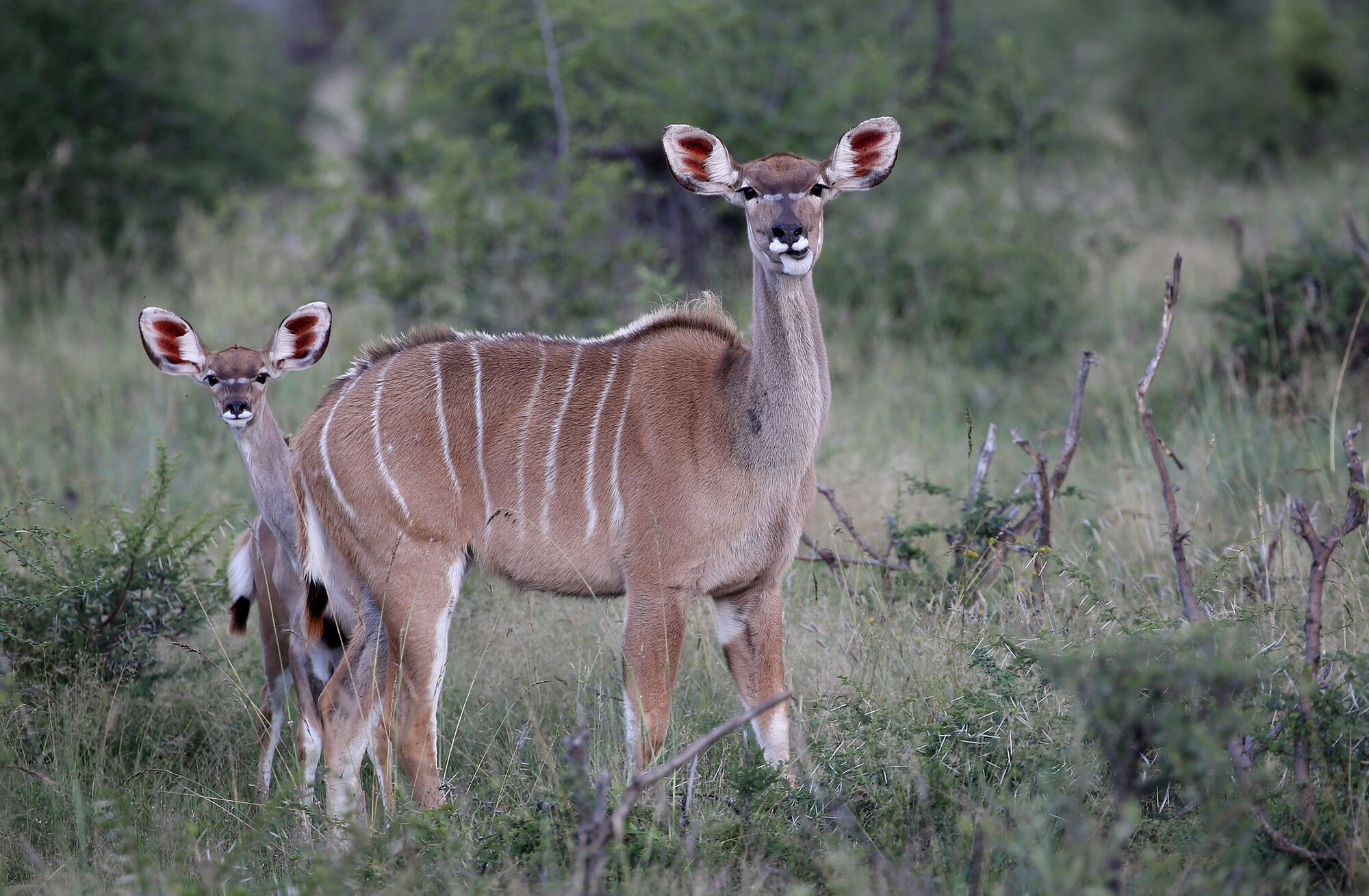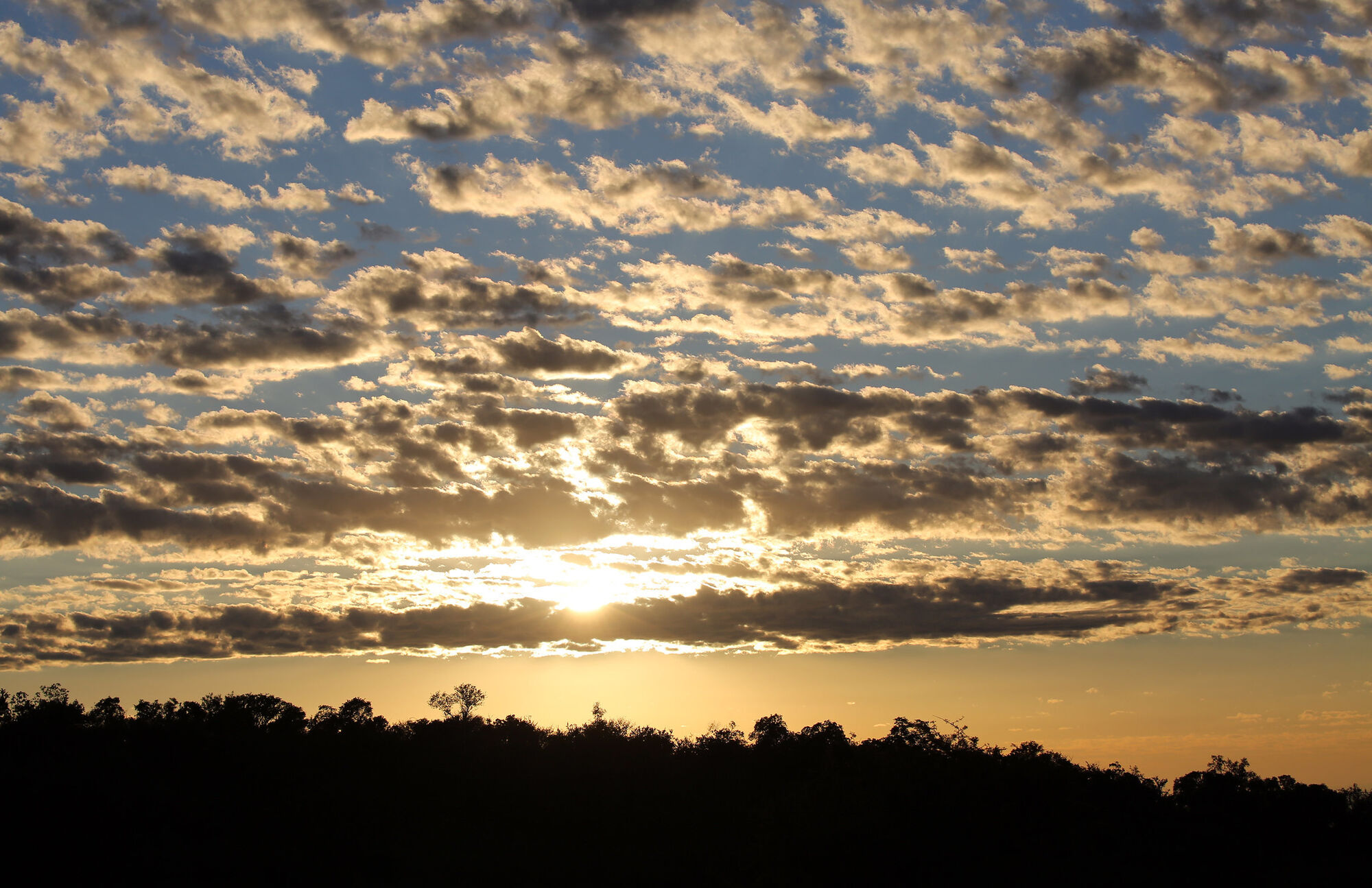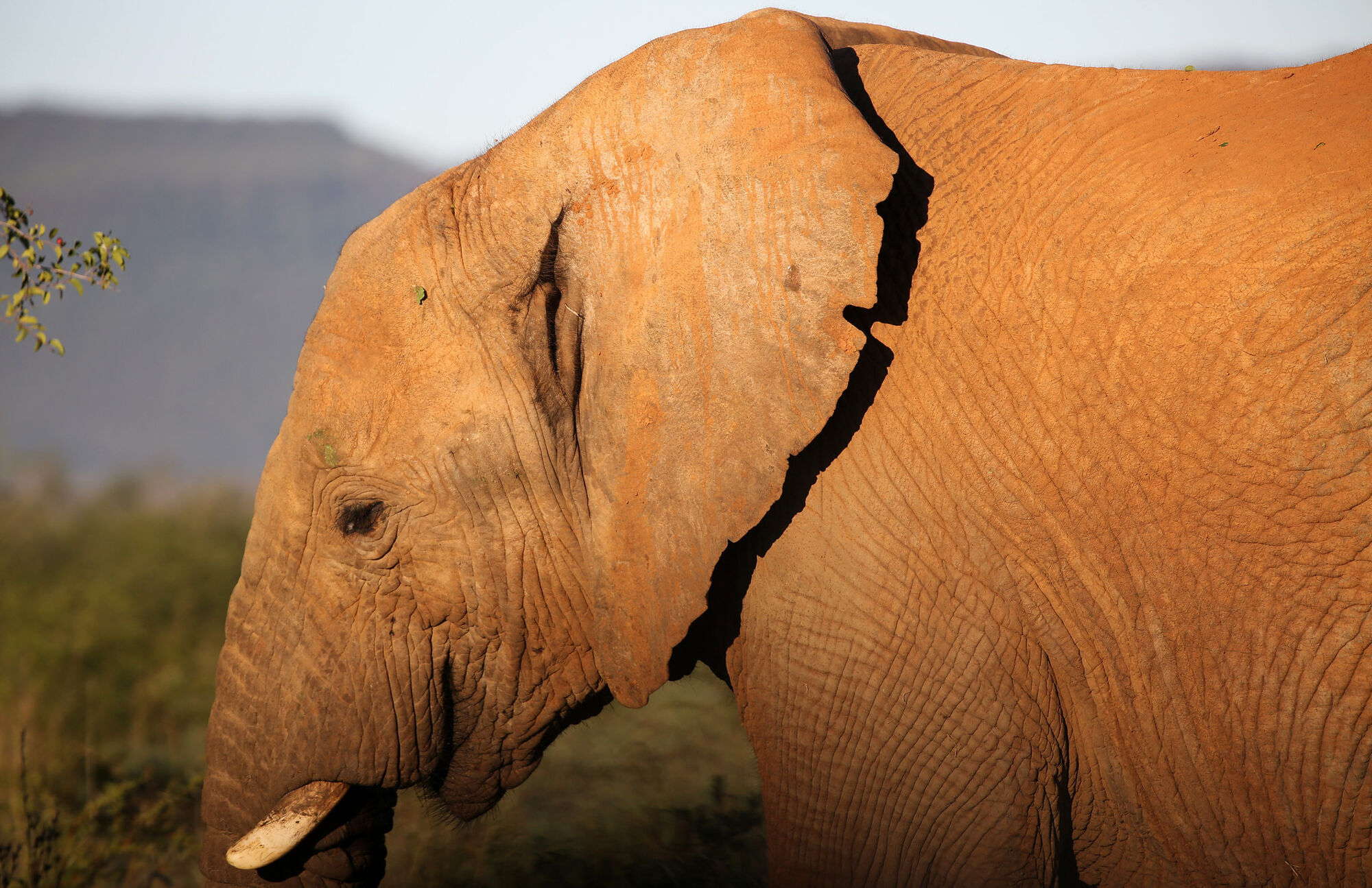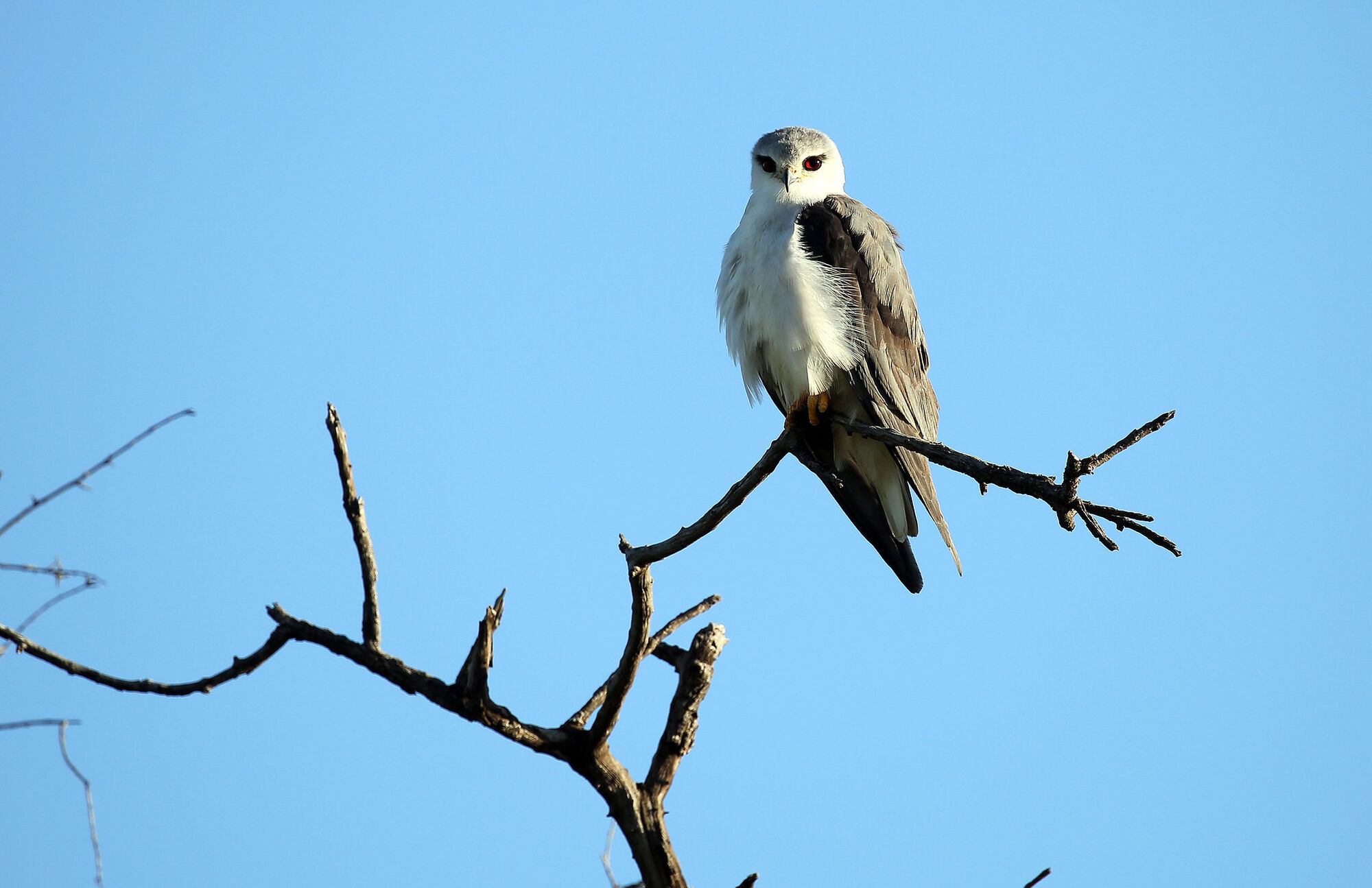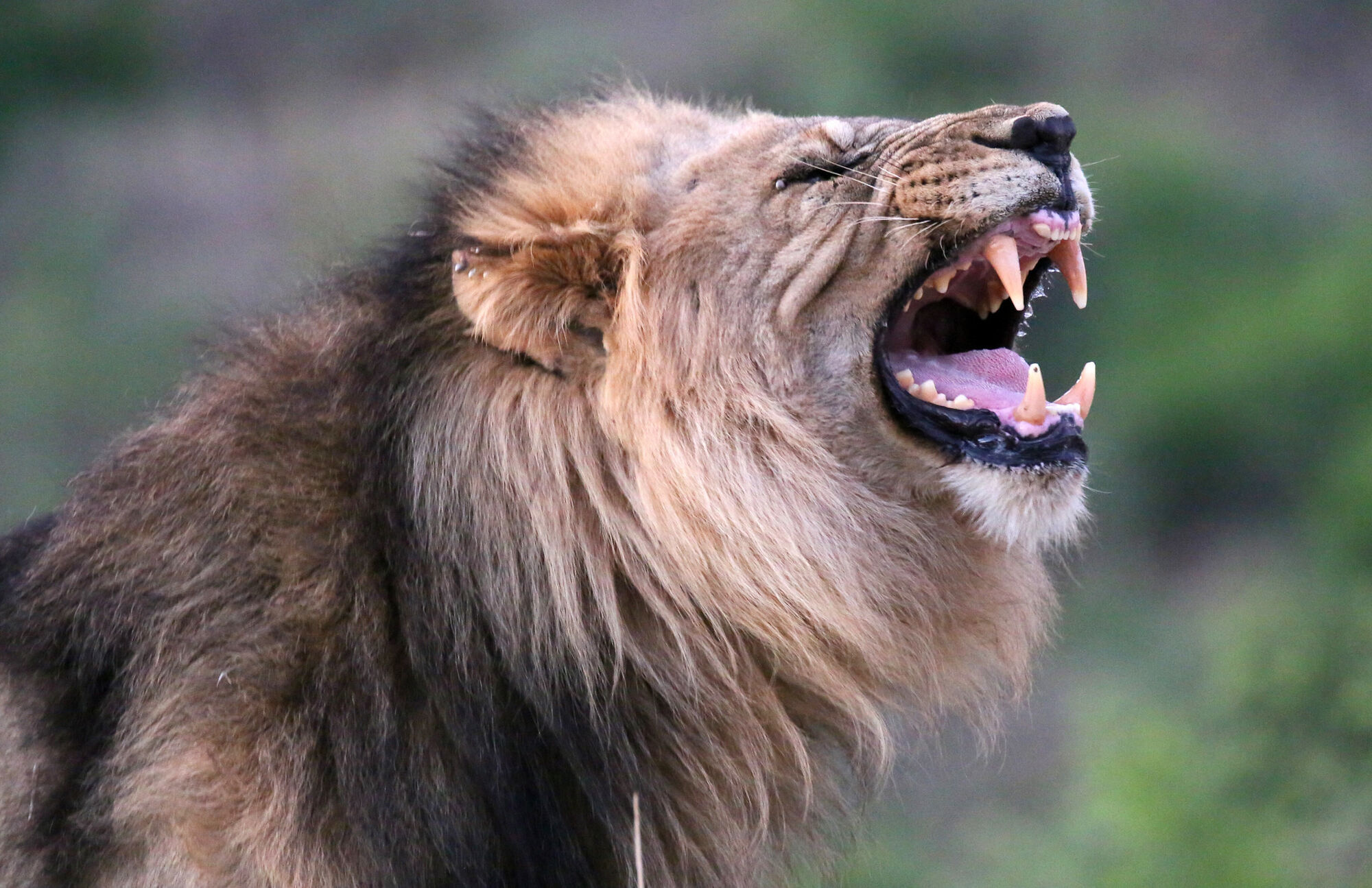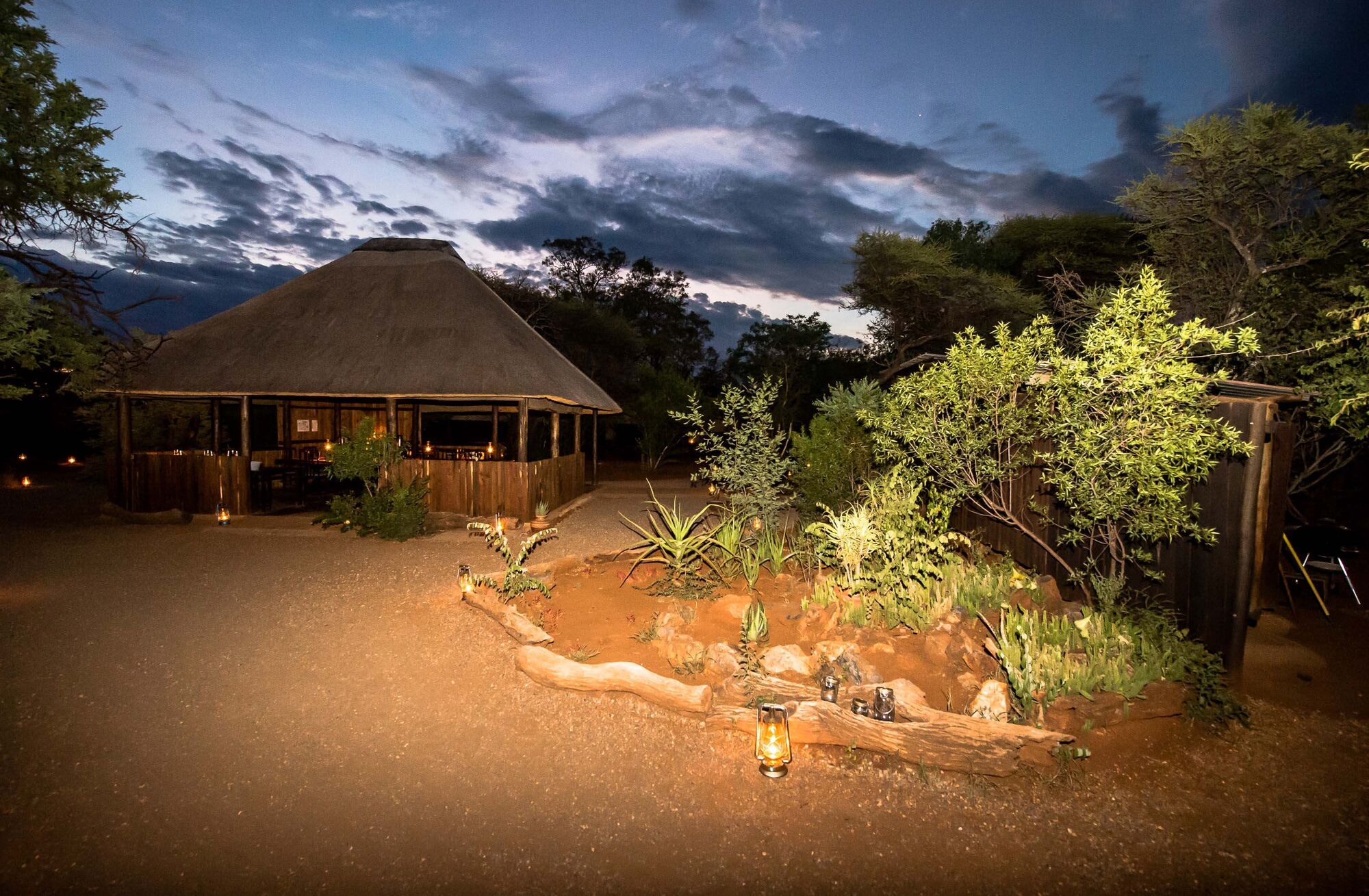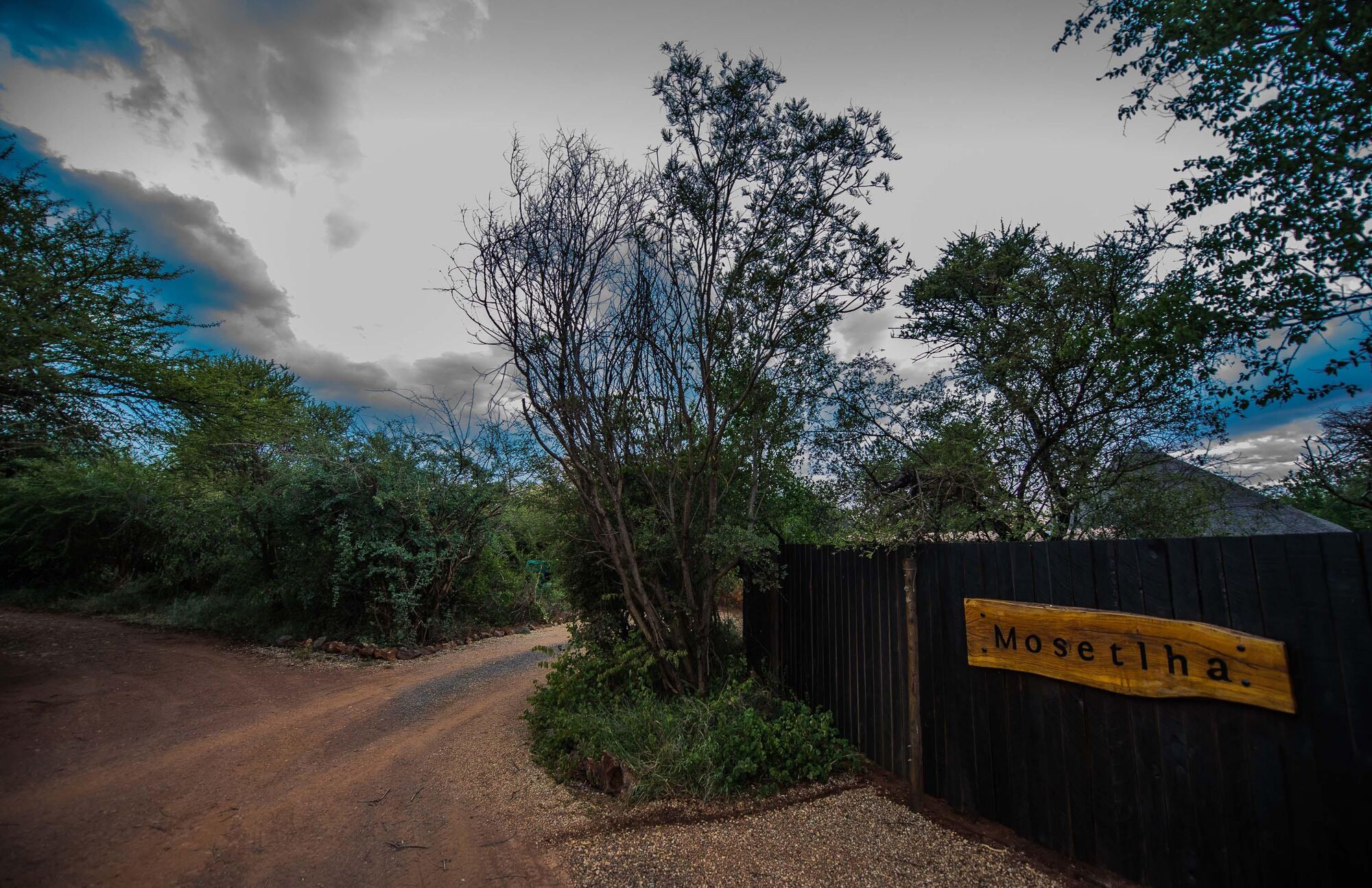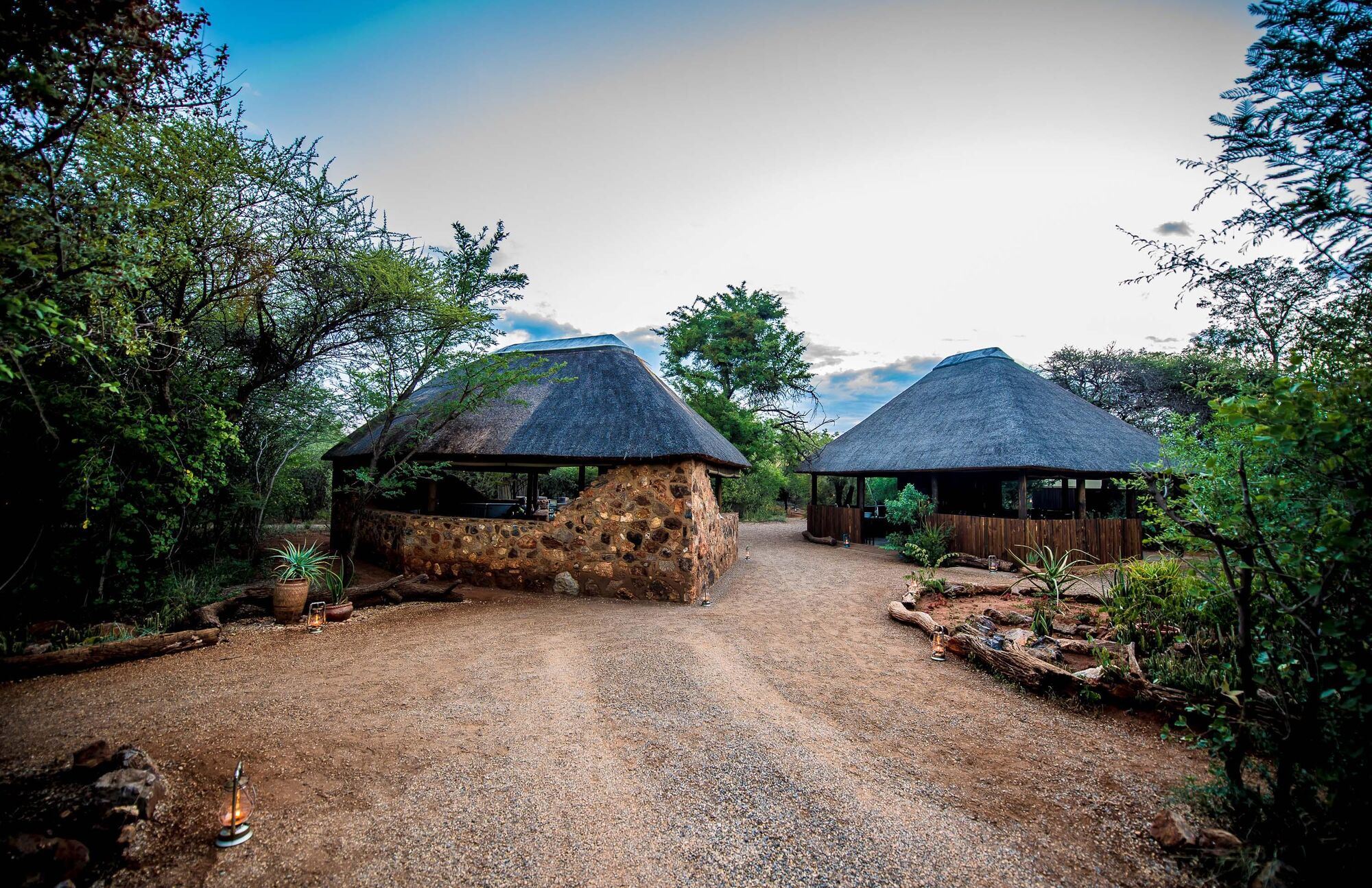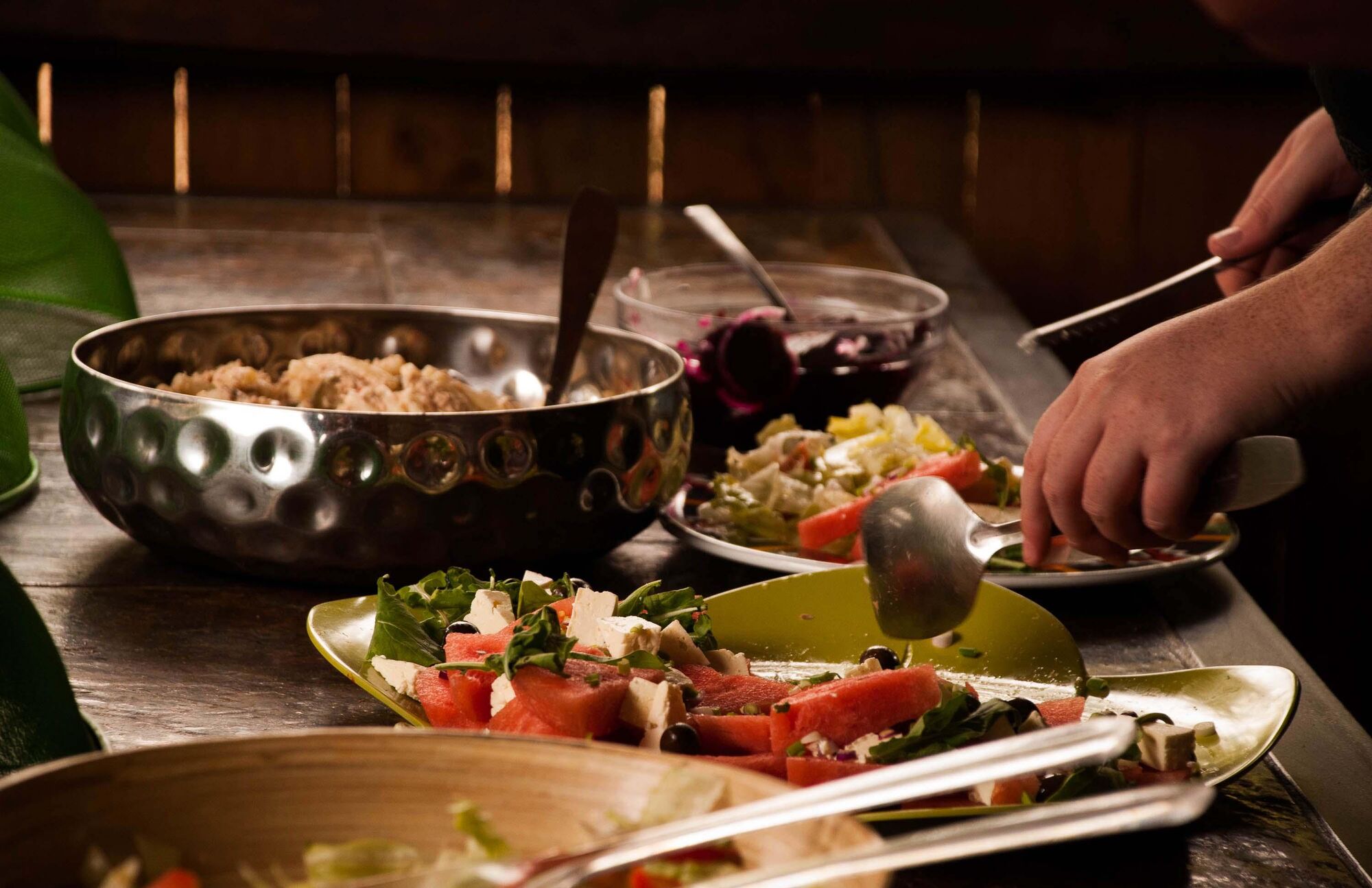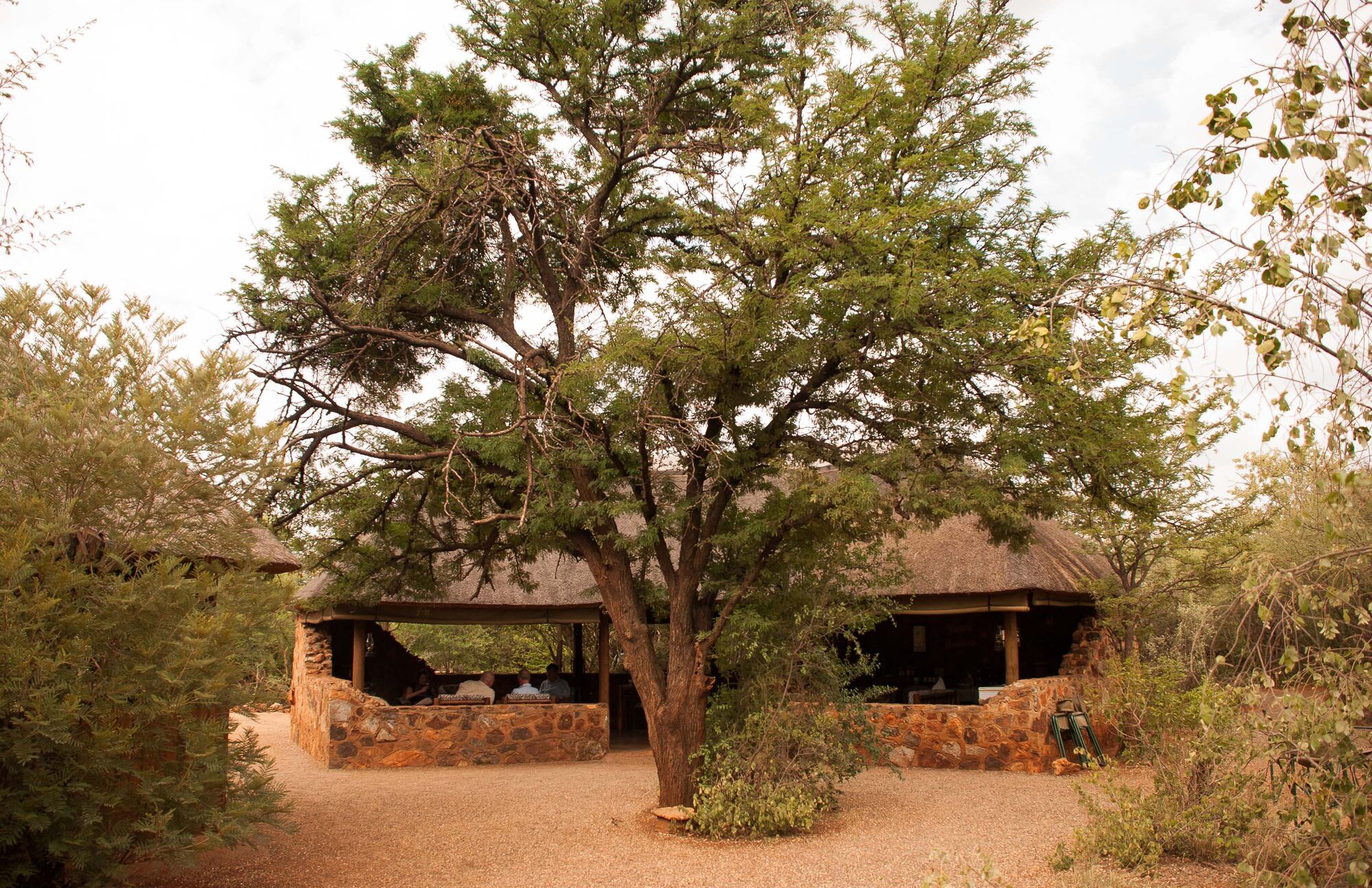Madikwe Game Reserve
Madikwe is one of South Africa’s largest game reserves, covering 75 000 hectares (750km2).
This magnificent, malaria-free reserve offers you the opportunity to experience the magic of the Big Five and a true safari adventure. Situated in the North West province with Botswana on its northern border, Madikwe is in a transition area between acacia bushveld and Kalahari thornveld. This means there is a large diversity of terrain and vegetation in the park, from open plains to thick thornveld. The soil is a red colour, indicative of the reserve’s proximity to the Kalahari Desert. More than 60 large mammal species occur in the reserve, and over 450 bird species.
Managed by the North West Parks Board, together with the private sector (lodge owners) and the local people, Madikwe is operated as a joint venture to stimulate ecologically sustainable economic activity based on wildlife, for the benefit of the people of the region.
Mosetlha Bush Camp & Eco Lodge was built in 1995, soon after the declaration of the Madikwe Game Reserve. The founder of the camp was Chris Lucas, who looked for an ideal spot right in the middle of the park. He followed an elephant path to a large mosetlha tree near a pan, and knew that he had found the perfect location.
Mosetlha is owned by the Lucas family, Chris and June Lucas, and their daughter, Caroline, who now runs the lodge. It is staffed by local people who grew up and live in the area. Some have been with Mosetlha for twenty years and longer.
The values upheld at the lodge are simplicity, authenticity and the conservation of our natural heritage.
The lodge has 10 cabins and can accommodate just 16 people, so is small and intimate. There are two game vehicles, driven by excellent fieldguides, Jonny Motsieloa and Justice Rasello.
The administration of the lodge is run from an office in Johannesburg. Please contact Kelly at the office on +27 (0)11 444 9345 or info@thebushcamp.com or by WhatsApp on +27 (0)71 951 5841.
Background to our name
Mosetlha is the Setswana word for the Peltophorum africanum tree, commonly known as the weeping wattle or, in Afrikaans, the huilboom (“crying tree”). In Setswana, Mosetlha means “the yellow one”, after the tree’s yellow flowers.
The mosetlha is a valuable tree to have in a game reserve as the leaves are eaten by elephant, black rhino, giraffe, kudu, impala and grey duiker. It is also a useful tree for bee-keepers as it’s a good source of nectar and pollen. The tree provides wonderful shade and offers protection against the sun during the hot summer months. It flowers in summer, attracting insects and, in turn, many insect-eating birds.
Apart from offering good-quality timber for making furniture (the wood was commonly used for riempie benches and chairs – with seats made of leather thong – at the turn of the 20th century), the mosetlha has many medicinal uses. Its powdered root is applied to wounds to hasten healing; the bark can be chewed to relieve colic; and an infusion made from the root or a decoction made from the bark and leaves can help to relieve stomach disorders, diarrhoea and dysentery, and to get rid of intestinal parasites. Steam from a hot decoction can be used to alleviate sore eyes, a sore throat or toothache.
It is also known as the “toilet paper tree” because of its soft leaves – but beware, these lovely, large leaves can easily be confused with those of the Acacia amythetophylla, which have small thorny spines.
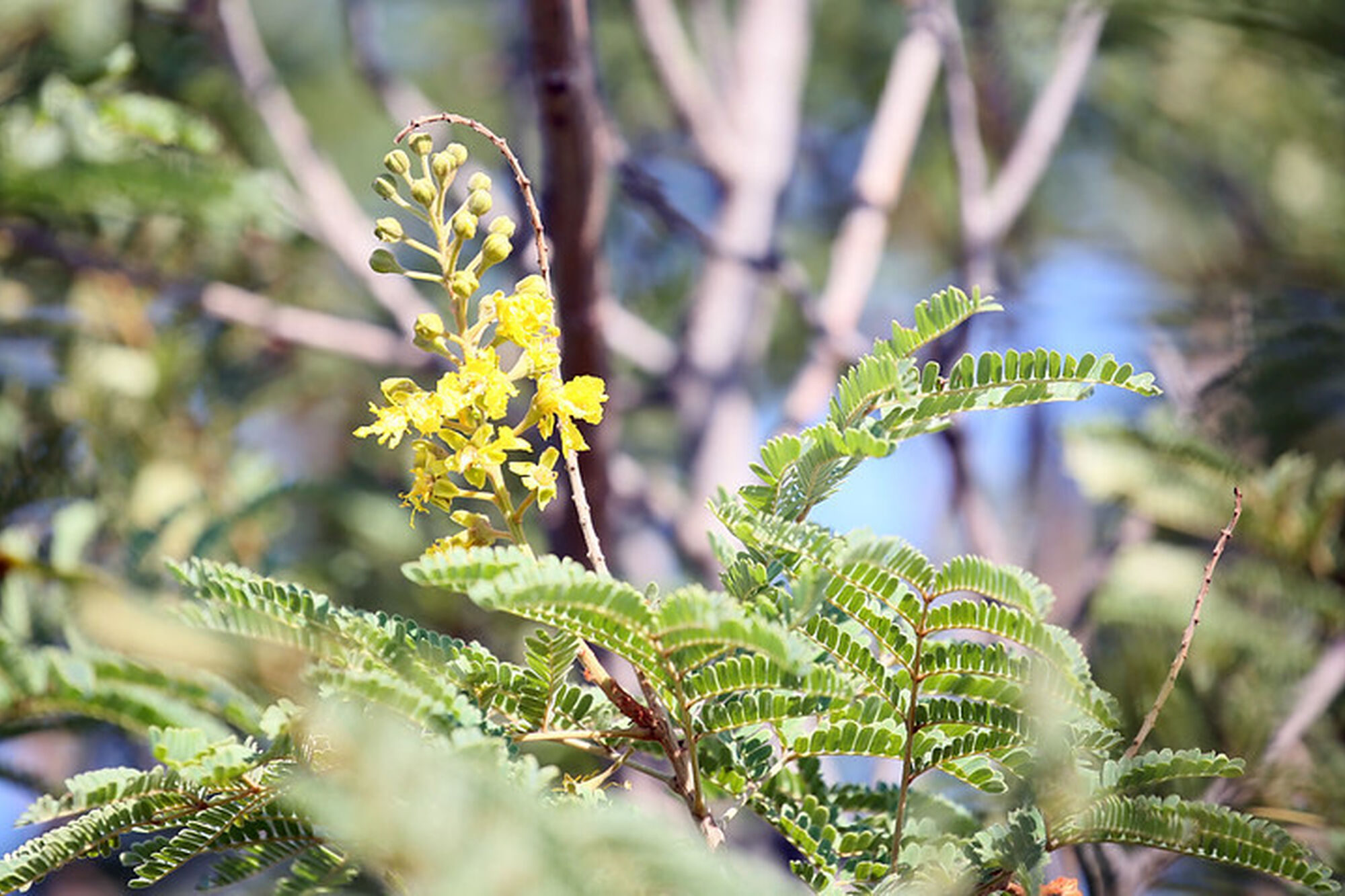
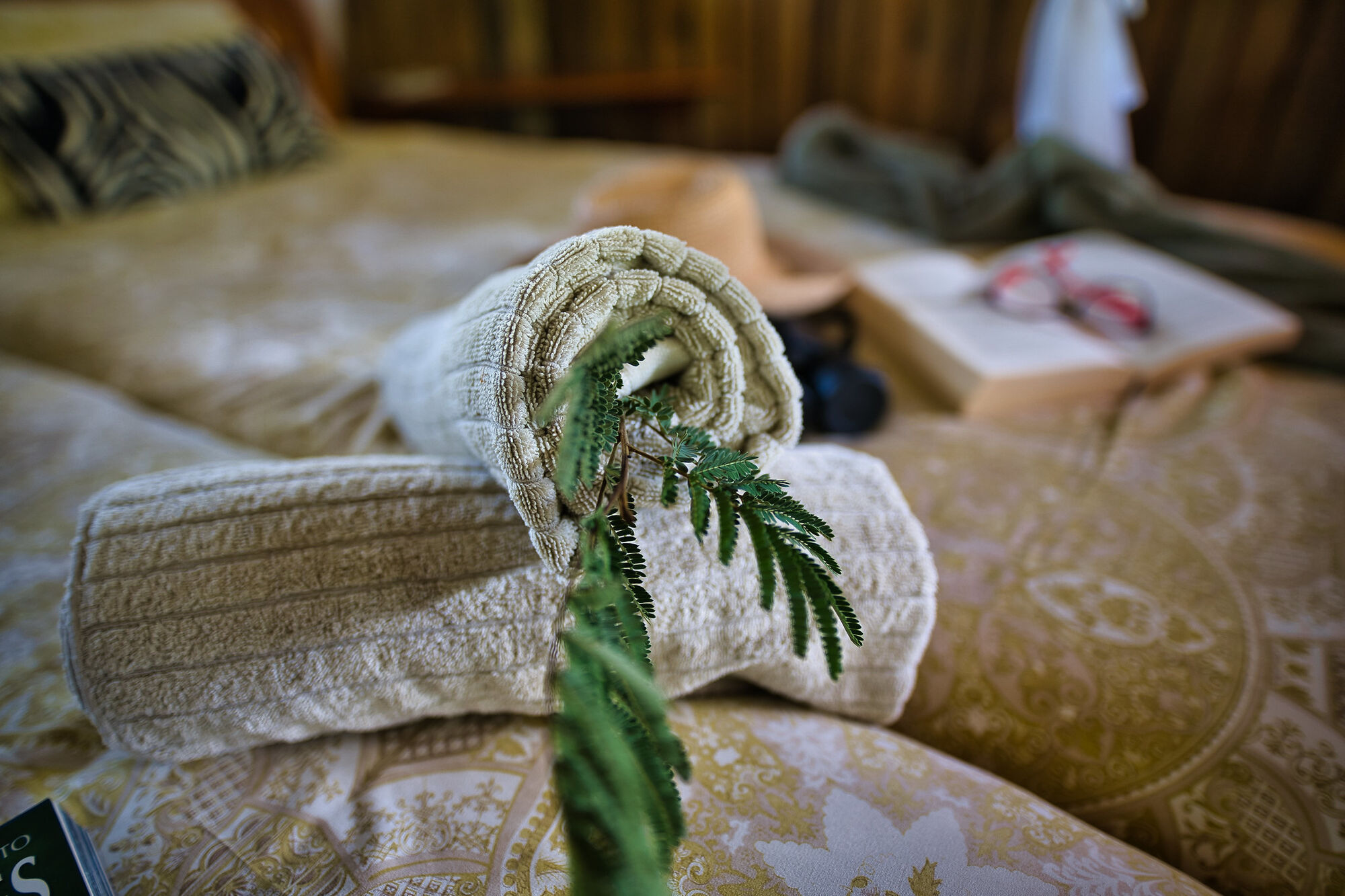
Frequently Asked Questions
What to expect upon arrival
The drive is 3.5 to 4 hours traffic-dependent, so in order to arrive by 12h30 please ensure you depart Johannesburg by 9am.
We do advise that you follow our directions as closely as possible, as cellphone signal becomes less reliable the closer you get to the reserve, which can cause delays if GPS re-routes you.
Upon your arrival at the gate (Abjaterskop or Molatedi), you will be provided with printed directions to the meeting point (North West Parks Board head office), where you leave your car.
Please do not drive directly into camp, as there is no parking for guests (Road transfer companies may drop you directly at the camp with prior agreement).
Please drive directly to the meeting point without stopping - we are notified by the Reserve Gate upon your arrival, and we will be waiting to receive you at the meeting point, which is a 20-minute drive from the gate. There will be ample opportunities for game-viewing on the drives from camp, so there’s no need to stop along the way.
We would appreciate if you could please inform Caroline on WhatsApp +27 83 305 7809 of any updates during your journey, so that we may feed back any delays to the camp who will be expecting your arrival at the gate at 12h30, or the time you have advised.
What are your check-in and check-out times?
Check in time at the Reserve Gate is 12.30, with another 20-minute drive to the North West Parks Board Admin Office, where you park your car and we will collect you in the game viewer.
Please note that we are unable to accommodate guests before this time.
Lunch will be served before your afternoon/evening game drive - in order to make the game drive, please ensure you reach the Reserve Gate by 14.00.The Reserve Gates close at 18.00 and nobody will be permitted entry.
Departure time is 11.00 after the morning game drive and breakfast.
Getting to or from another lodge within the Reserve
No self-driving is permitted within the Reserve, apart from driving between the gate and lodges.
As we are unfenced, our guests park at the North West Parks Board Head Office, and are collected by our guides in the game viewer.
If you are already staying at another lodge within the Reserve and need to get to us, or get to another lodge after staying with us, we can arrange with that lodge to either fetch you or meet up halfway.
Can we pay be Credit Card?
For international guests, absolutely - there are no additional fees charged when paying for your accommodation.
For expenses incurred whilst you're in camp, i.e. for items not included in our rates (including drinks, entrance and conservation fees, and gratuities), we encourage guests to bring cash.
This is due to us being remote and off-grid, with no credit card facilities in camp.
For those wanting to pay by card, a form will be provided for you to complete, which is then processed upon return to the Johannesburg office, with a 5% surcharge.
For South African residents, payment for accommodation must be made via EFT from a South African bank to qualify for the discounted local rates.
What is your Cancellation Policy?
Whilst 50% deposit is required to secure your dates, the full balance is payable 30 days prior to the start date of your visit.
In the event of cancellation 31 days or more before the arrival date of your stay, the cancellation fee is 25% of the total booking value.
If cancellation is within 15 - 30 days of arrival, the cancellation fee is 75%.
If cancellation is within 14 days of arrival, the cancellation fee is 100%.
If accommodation is booked for a date within 30 days of the arrival date, the full amount is payable at the time of booking and a cancellation fee is applicable in the event of a subsequent cancellation (75% if 15 to 30 days before arrival; 100% if within 14 days).
Please note that our cancellation policy is in place to support our team and keep our operations running, as last-minute changes are often challenging for small businesses like ours.
We encourage guests to consider travel insurance to cover unexpected events. This way, you’ll have peace of mind, knowing that any unforeseen changes won’t lead to unexpected expenses.
Do I need Travel Insurance?
We highly recommend that you do, even when travelling within South Africa.
Am I eligible for a discount or South African rates?
Only South African citizens currently living in South Africa qualify for our discounted South African rates.
We reserve the right to ask for proof of current address (not ID) to qualify for these rates.
The discounted rate will apply to only those living in SA, not the entire booking.
Payment must be made via EFT from a South African bank to qualify for the heavily discounted rates.
As much as we’d love to accommodate all requests, in fairness to our repeat overseas guests who pay the full standard rate, we are unable to extend discounts to guests who don’t currently reside in South Africa.
We’re proud to offer a package that includes all meals, accommodation, and two expert-led game drives each day (which we believe to be the most affordable in Madikwe Game Reserve), and our already-lean rates leave us with little flexibility to offer additional discounts.
If we determine that any personal information or data provided by guests at any stage of the booking be false or otherwise inaccurate or misleading, we reserve the right to cancel or amend rates for their booking.
This pertains most obviously to falsely declaring guests' residential status as South Africa in order to receive discounted local rates, when this is not the case.
Do you have a restaurant?
Whilst we do not have a restaurant, your stay is fully catered, and our guests love the intimate down-to-earth quality of connecting with others visiting from all over the world and sharing stories around our massive dining table (made from reclaimed railway sleepers).
This especially appeals to Solo Travellers, who don't have to sit alone at their own table.
Meals are served around the game drives - with breakfast after your morning game drive, lunch during late afternoon (before your afternoon/evening game drive), and dinner upon your return from your evening game drive.
Snacks are provided half-way through each game drive, where the field guide stops at a picturesque spot for you to stretch your legs whilst enjoying hot drinks or sundowners.
What meals do you offer?
At Mosetlha, we serve delicious, home-style meals designed to complement your bush experience. Rather than an à la carte menu, we prepare set meals for all guests each day, carefully planned in advance to ensure the freshest ingredients and minimal waste.
Our evening meals showcase authentic South African cuisine, cooked the traditional bushveld way over open fires, in potjie pots, and on braai grids. Expect hearty favorites like braai, bobotie, and potjie, served on rotation - simple, rustic, and delicious!
We also embrace slow cooking with Wonderbags and prioritise fresh, seasonal fruit and vegetables, along with free-range meat and eggs.
Daytime meals range from burgers, pasta, soups and salads depending on the season.
If you have any food allergies or dietary requirements, please let us know in advance so we can accommodate you while maintaining our sustainability ethos.
Do you cater for different dietary requirements?
We can certainly cater for food allergies and dietary requirements such as Vegetarian or Vegan, and in most cases Gluten-Free - however as we're so remote and unable to keep perishables long-term, we do advise in this case to bring along your own gluten-free bread, rolls and rusks etc.
We generally suggest vegetarian meals for Halaal and Kosher guests (we do not serve pork).
Menus are planned ahead of re-stocking the camp, and dietary restrictions need to be informed at least one week in advance to ensure we have sufficient stock in camp.
For any short-notice bookings, we may still be able to cater for any requirements, provided we have stock.
Do you offer All-Inclusive?
Our rates include all meals (plus accommodation and two game drives a day).
We operate a cash bar which is stocked with an array of wine, beers, ciders and soft drinks.
May I bring my own wine?
We do offer a lovely selection of red, white, rose and sparkling wine (not included in the rates).
These range from R250-400 per bottle.
We would prefer you didn't since fridge space is limited, but if you do want to bring a special bottle, we will charge corkage.
Is it too cold to stay in Winter?
Not at all - in fact Winter provides the best game viewing opportunities, when the vegetation has thinned out, and more animals gather at the watering holes.
While the evenings and mornings may be chilly, the daytime temperatures remain warm and can get quite hot, so there’s no need to exclusively pack winter clothes. A warm jacket, scarf, beanie and gloves will suffice along with long trousers, and bring along some summer clothes for relaxing on the deck during the day.
Our cozy beds are equipped with exceptionally warm winter-weight duvets and extra blankets.
We offer hot water bottles for added comfort when needed, and windproof blankets are on game drive vehicles.
Gas mushroom heaters warm up the lapa and dining room on especially cold evenings, and you can wind down around the warming campfire.
Chargers, Plugs & WiFi
As we are off-grid, we do not have WiFi or electrical sockets for hairdryers etc.
There are however, certain areas around the camp that can get signal if you have data on your phone (depending on your network).
Despite having no electricity, the camp manager is able to charge your phone and camera batteries with solar charging points at staff houses. We just ask that you bring along any plugs and adaptors you may need, plus spare batteries for use whilst your others are charging.
What do I need to pack?
The dress code is casual. In addition to your clothing, please also bring:
Light raincoat (summer)
Insect repellent (Tabard/Mylol)
Water Bottle
Camera (charger/spare batteries)
Thick jacket, gloves, beanie, scarf (for winter drives)
Sun protection cream
Torch/Flashlight and Binoculars
Cap or hat
Open shoes for relaxing during the day (even in Winter the days can get warm)
Closed shoes for game drives
Do we need to bring our own toiletries?
We provide all bedding and towels, as well as body wash and shampoo/conditioner in your shower.
Do you have a Spa?
We don't offer spa treatments, as our bush camp is entirely off-grid and unfenced (and therefore the only genuine eco lodge in Madikwe).
Guests love to visit us to enjoy the natural beauty and tranquility of our unique setting, whilst seeking the soul of the wild rather than the indulgence of a luxury hotel.
We appeal to responsible travellers looking for a sustainable safari adventure and immersive wilderness experience.
Do you have a pool?
Whilst we understand this is a popular option, we do not have a swimming pool. We are unfenced and would not be able to keep animals out of it.
Our outdoor safari-style showers however provide the perfect opportunity to cool off during hot days - our eco-friendly version of “aircon”!
Do I need to take malaria tablets?
Madikwe is Malaria-free!
Having said that, we do recommend that you bring along mosquito repellent if they annoy you or you are prone to being bitten.
Do I have to share bathrooms with other guests?
Not at all - each cabin now has its own private toilet and shower.
Do you offer private game drives?
Jonny and Justice - our expert fieldguides, have been with us for 22 and 15 years. They take you out on two long (4 hour) game drives a day - early morning and late afternoon into the evening.
As only lodge vehicles are able to drive in Madikwe, all guides from all lodges are in radio contact and able to call in special sightings. We are allowed to drive off road (for confirmed sightings) and follow the strict Madikwe Code of Conduct, which gives us the best possible sightings whilst taking care of the floral, fauna, and roads.
We are able to traverse the entire reserve.
Contact us to discuss exclusive vehicle use.
Can we relax in camp without feeling bored?
Absolutely. The twice-daily game drives are not compulsory.
You are welcome to sleep in on some mornings to relax on viewing deck with a cup of coffee or tea. Or sit around the fire with a glass of wine in the evenings.
There is also cereal and fruit available to keep hunger at bay until breakfast or dinner is served (when others return from their game drive).
We also have the Lapa with comfortable seating, plenty of wildlife books and board games.
Being unfenced, it it safe to walk around?
We do have a 2m high fence to keep the elephants out.
Occasionally, wildlife may approach for water during dry seasons, or when guests are out on a game drive, but our team closely monitors any such activity.
Whilst our toilets are just a few steps away from the cabins, we do understand that some prefer not to venture outside overnight, so for your peace of mind we’ve got each guest covered with a freshly cleaned, lidded potty for overnight use.
Our staff are seasoned wildlife experts and stay on the premises overnight, so assistance is always close by should you need it.
What is it like for children to visit?
We are a rustic unfenced bush camp, and can only accommodate children over the age of 6 years old - if you have a family celebration with young kids, please ask us about our special “exclusive use” rates.
The lodge is intimate, so children will need to be considerate towards other guests during game drives in terms of noise.
Please bear in mind that children will need to be monitored by you at all times, and nobody is to wander off beyond our boundary.
The family adjoining cabins, whilst not interleading, do share a wall - guests often have 1 child sharing with 1 parent, if they feel their children are too young to be “separate”.
Children are treated the same as adults in camp and on game drives, and really enjoy learning about our eco friendly solutions - especially how to make their bucket shower!
Both of our field guides have children and are exceptional with them.
What is special about Mosetlha?
Mosetlha provides you with the opportunity to disconnect from all the technology, distractions and craziness of the world we’re living in.
Being completely off-grid with environmentally friendly alternatives to running water and electricity, we are the only genuine eco lodge in Madikwe Game Reserve.
Our sought-after award-winning expert field guides attract repeat travellers from all over the world, to experience and photograph the Big 5 and more in the malaria-free Madikwe Game Reserve.
Thrills over Frills - our affordable rates allow you to reconnect with your soul whilst experiencing the full Madikwe experience.
When is the best time to see Wild Dogs (and other rare animals)?
The wild dogs usually den in July each year (if the alpha female is pregnant). Depending on where they choose to den, we don't always see them until about September, even October.
Generally, our guests will often see the magnificent seven, but we do encourage guests to stay a minimum of 4 nights to improve their chances of seeing all of the Big 5, cheetah, wild dogs and a wider variety of wildlife.
